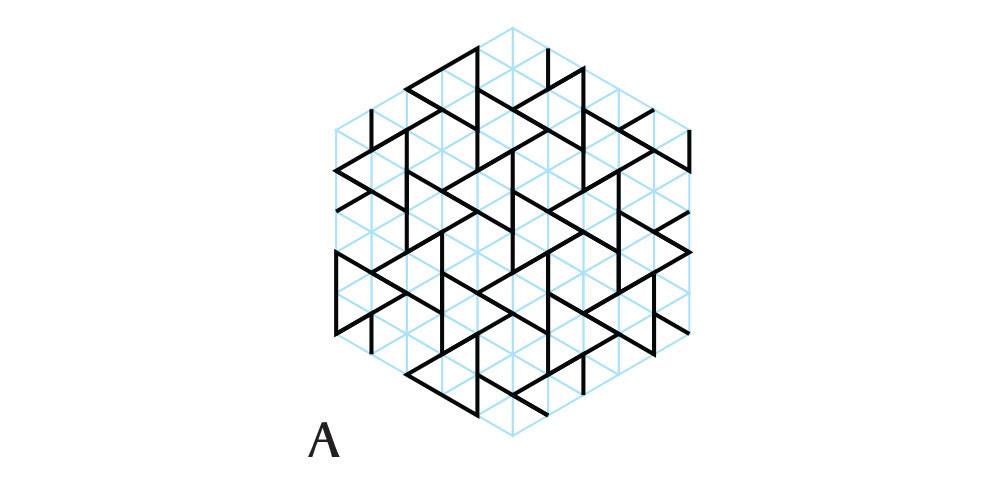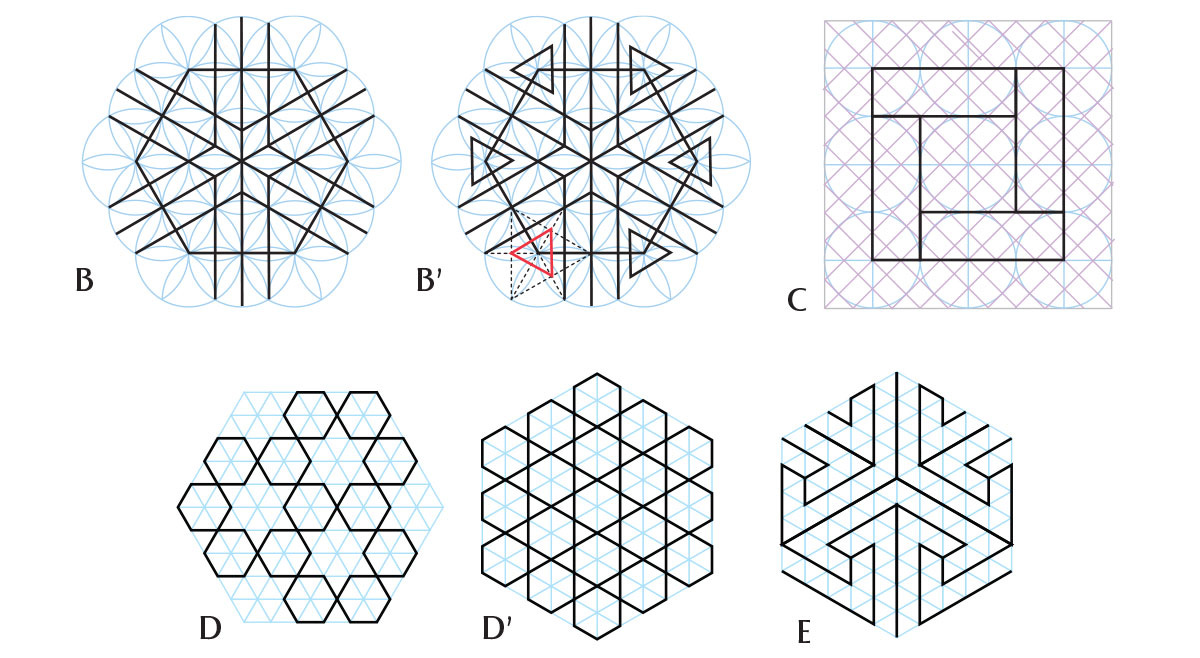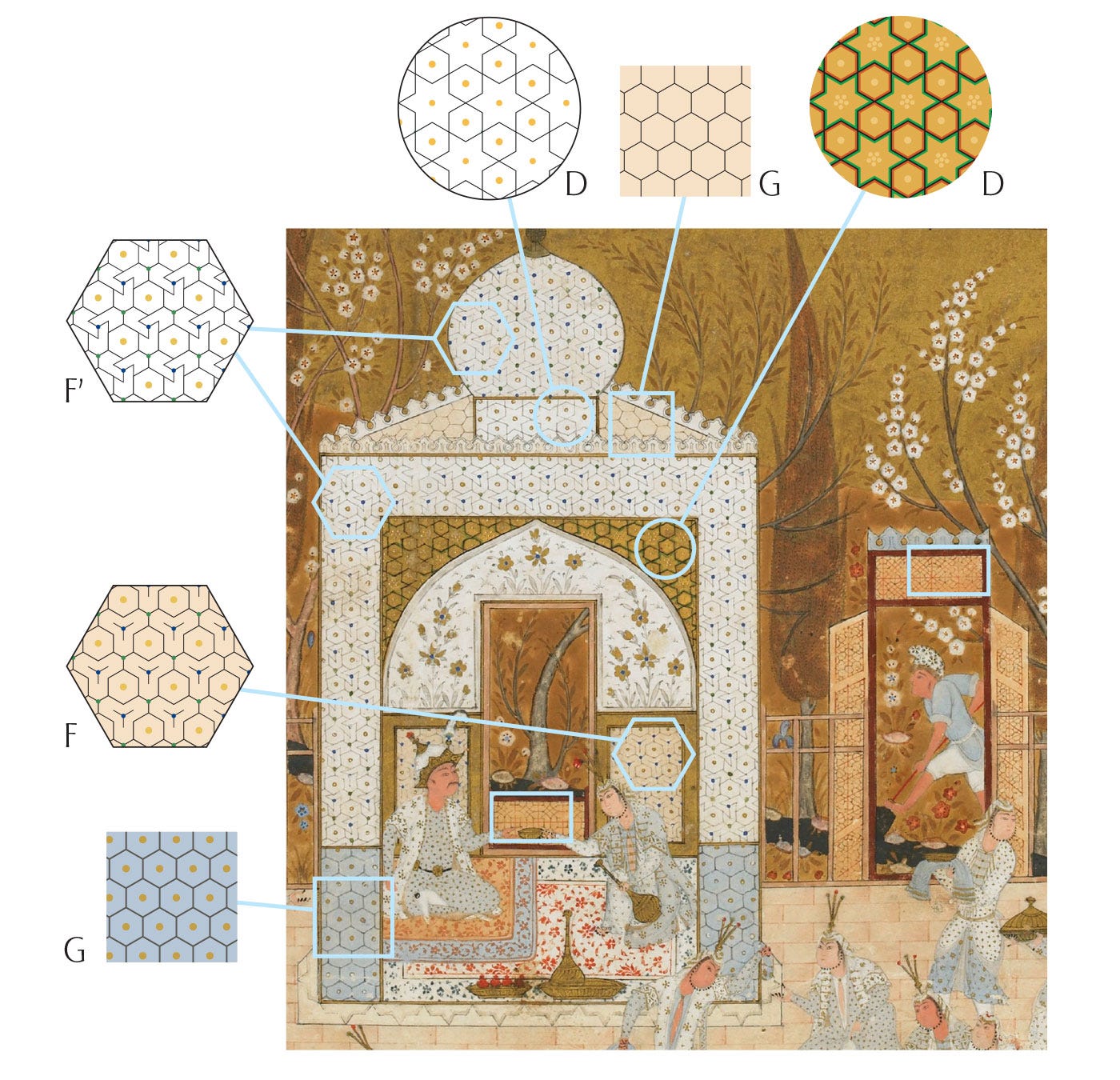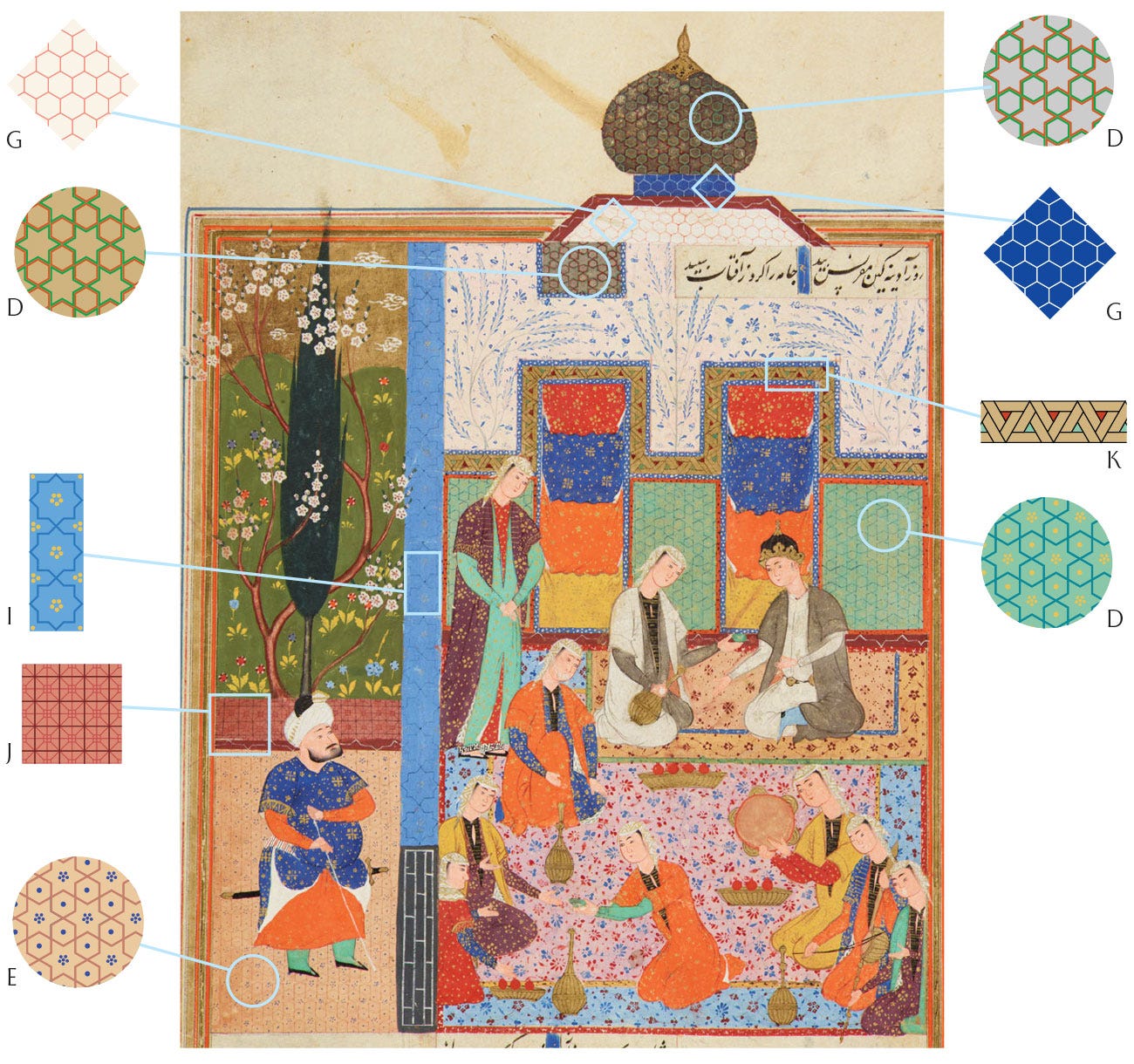It’s been a strange old time lately; the end of one chapter for me and beginning of something new and as yet unknown. So it feels appropriate to now conclude this series with Bahram reaching the end of his journey and the liberation of the White stage.
Previous chapters:
Below are the images1 for the final stage of Bahram’s journey. Each is linked to its source page where you can zoom in on the fine details. You might want to read this post in a browser rather than email, so you can see the enlarged images.
The White Dome
On Friday, Bahram visits Dorsatī, Princess of Persia, clad in White, under the sign of Venus, Lady of Copper.
Chester Beatty Library

The single geometric pattern is the same as last chapter’s in all but the omission of golde details. But the sudden use of a mosaic pattern on the outer walls, which are the ones that indicate the pavilion’s colour, is fascinating! Why this choice, rather than one of the usual patterns in white?
Metropolitan Museum of Art
This manuscript has been highly consistent throughout with its patterns and colours, with the characters’ caftans doing practically all of the colour signalling.
Smithsonian National Museum of Asian Art

In contrast, the colour scheme here leaves us in no doubt at all. Nearly all of the pavilion and characters are in shades of white, with gold and blue highlights.
Bibliothèque Nationale de France
Here is another, more modest collection of white patterns, though the patterns themselves are not new. The dome has the characteristic colour of lead white, which is warm and creamy. In contrast the bricks below the dome have a bluish hue that could be due to mixing in a tiny amount of lapis lazuli. The more yellowish white between them is almost certainly an admixture as well, but there are more options so it’s less easy to identify.
Cambridge University Library
This is interesting because on first sight the dome doesn’t seem to be white at all. But I believe this is simply due to tarnish: the main colour is clearly metallic, and was in all likelihood shell silver, much darkened with time. The thumbnail shows what the original dome colour must have been like.
British Library

Finally, the BL version carries on with another iteration on its preferred pattern, and a rather splendid take on a “white” dome.
And we are done! I hope you enjoyed this series. I have others in mind but please feel free to let me know if there’s anything particular you’re interested in seeing.
I had shared my interest in making a book about these patterns that would include tutorials, but I’m not sure now: I’ve looked into it but only the Met offers the images free for any use. Purchasing the rights to use the others (even just for the 3 most interesting manuscripts) would cost a lot and I feel this might be too niche to even crowdfund for it. And there’s no point in making a book without having reproductions and close-ups of the originals. So I don’t know at this point if it’ll happen. But remember that if you’re interested in learning to draw these patterns, I offer step-by-step tutorials in my print-at-home booklets The Grid of Triangles and The Grid of Squares available here.
The sources of these images are the following manuscripts, from the oldest to the newest:
Chester Beatty Library, Per 171 (AD 1492, AH 897), unknown artist.
Metropolitan Museum of Art, 13.228.7.8 (AD 1524, AH 931), painted by Shaikh Zada.
Smithsonian National Museum of Asian Art, F1908.271 to 277 (AD 1548, AH 955), unknown artist
Bibliothèque Nationale de France, Départment des Manuscrits, Supplément Persan 1956 (AD 1560, AH 965), unknown artist
Cambridge University Library, MS Add.3139 (17th c. AD, 11th c. AH), unknown artist.
British Library, Add MS 6613, ff138v-196r (AD 1671, AH 1076), painted by Ṭālib Lālā.
























Congratulations on completing this series. It has been both beautiful and enlightening.